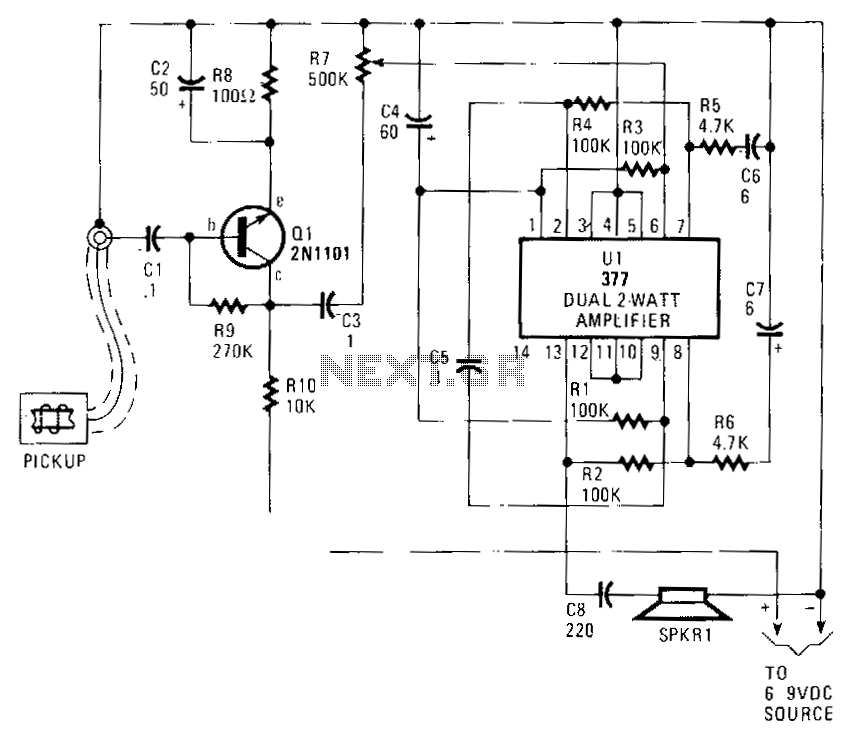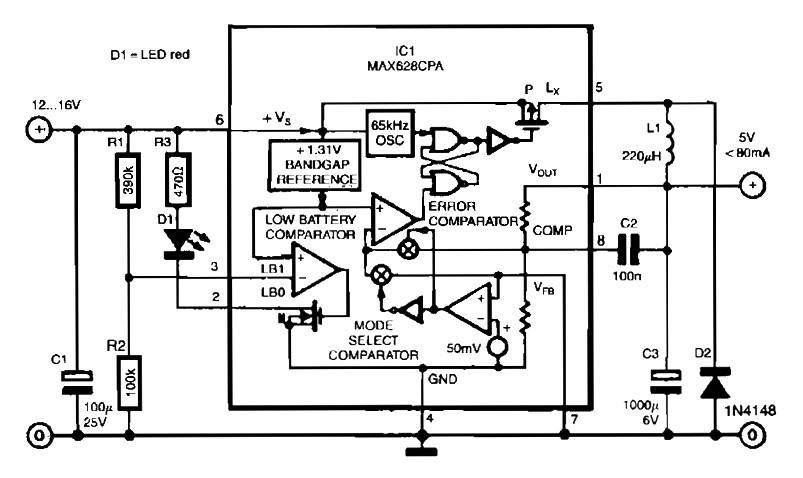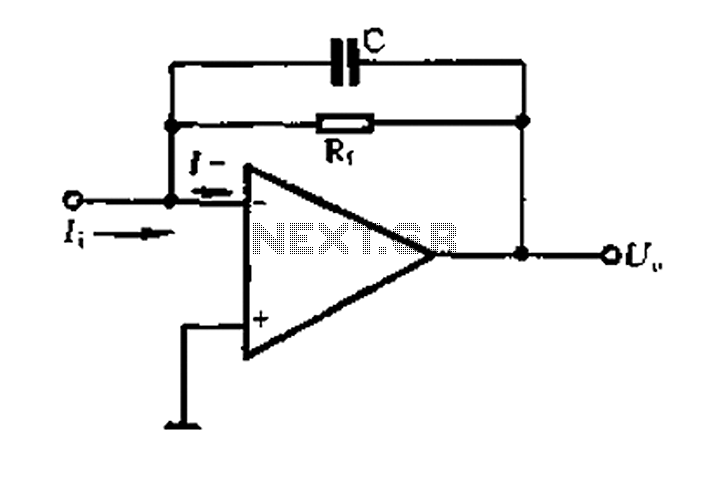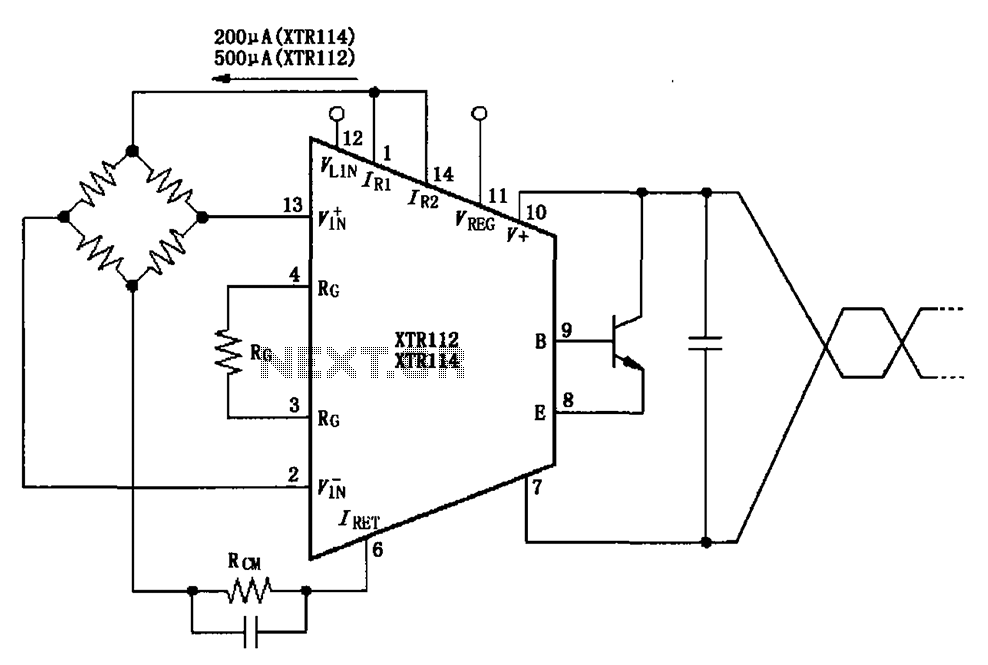
35w audio amplifier circuit by stk082
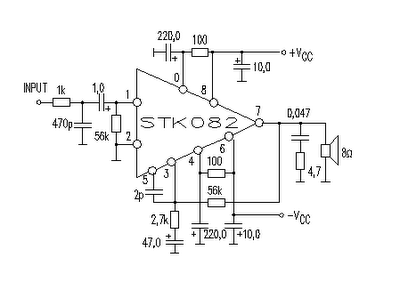
This amplifier circuit is suitable for home power audio devices. The STK082 amplifier specifications suggest that it can operate with supply voltages of up to ±43V. However, it is advisable to use no more than ±25V for 8-ohm loads, although ±30V may be acceptable if adequate heatsinking is provided.
The STK082 amplifier is a high-performance audio amplifier designed for home audio applications, capable of delivering significant power output while maintaining sound quality. The circuit typically incorporates a complementary push-pull configuration, which enhances efficiency and reduces distortion.
The recommended supply voltage range of ±25V to ±30V is critical for optimal performance, especially when driving 8-ohm speakers. Exceeding the voltage rating can lead to thermal issues or potential damage to the amplifier, particularly if insufficient heatsinking is employed. Adequate heatsinking is essential to dissipate heat generated during operation, ensuring the amplifier remains within safe temperature limits.
The circuit design includes input and feedback networks to stabilize gain and reduce noise, contributing to the overall audio fidelity. Bypass capacitors are also used to filter out power supply noise, enhancing the performance of the amplifier in real-world applications.
In terms of component selection, high-quality resistors and capacitors are recommended to minimize signal degradation. The output stage may include output transistors rated for high current to ensure that the amplifier can drive speakers effectively without clipping.
Overall, the STK082 amplifier circuit is a robust solution for home audio applications, providing users with a reliable and high-quality audio experience when properly implemented within the specified voltage and thermal guidelines.This amplifier circuit is suitable for home power audio devices. The STK082 amplifier specifications might lead you to believe that it can use supply voltages of up to ±43V. but I don`t recommend anything greater than ±25V if 8 ohm loads are expected, although ±30V will be fine if you can provide good heatsinking.
🔗 External reference
The STK082 amplifier is a high-performance audio amplifier designed for home audio applications, capable of delivering significant power output while maintaining sound quality. The circuit typically incorporates a complementary push-pull configuration, which enhances efficiency and reduces distortion.
The recommended supply voltage range of ±25V to ±30V is critical for optimal performance, especially when driving 8-ohm speakers. Exceeding the voltage rating can lead to thermal issues or potential damage to the amplifier, particularly if insufficient heatsinking is employed. Adequate heatsinking is essential to dissipate heat generated during operation, ensuring the amplifier remains within safe temperature limits.
The circuit design includes input and feedback networks to stabilize gain and reduce noise, contributing to the overall audio fidelity. Bypass capacitors are also used to filter out power supply noise, enhancing the performance of the amplifier in real-world applications.
In terms of component selection, high-quality resistors and capacitors are recommended to minimize signal degradation. The output stage may include output transistors rated for high current to ensure that the amplifier can drive speakers effectively without clipping.
Overall, the STK082 amplifier circuit is a robust solution for home audio applications, providing users with a reliable and high-quality audio experience when properly implemented within the specified voltage and thermal guidelines.This amplifier circuit is suitable for home power audio devices. The STK082 amplifier specifications might lead you to believe that it can use supply voltages of up to ±43V. but I don`t recommend anything greater than ±25V if 8 ohm loads are expected, although ±30V will be fine if you can provide good heatsinking.
🔗 External reference

